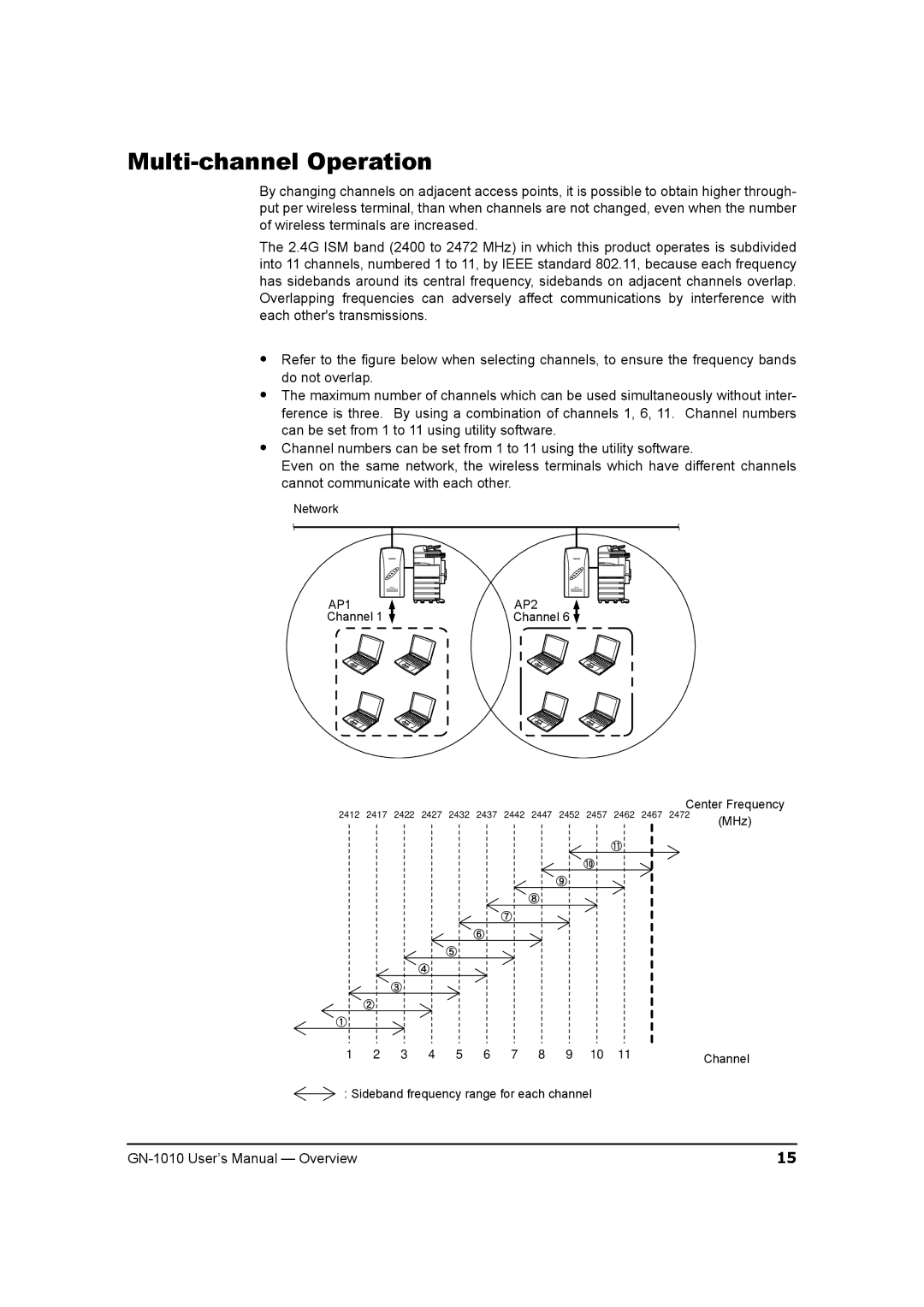
Multi-channel Operation
By changing channels on adjacent access points, it is possible to obtain higher through- put per wireless terminal, than when channels are not changed, even when the number of wireless terminals are increased.
The 2.4G ISM band (2400 to 2472 MHz) in which this product operates is subdivided into 11 channels, numbered 1 to 11, by IEEE standard 802.11, because each frequency has sidebands around its central frequency, sidebands on adjacent channels overlap. Overlapping frequencies can adversely affect communications by interference with each other's transmissions.
•Refer to the figure below when selecting channels, to ensure the frequency bands do not overlap.
•The maximum number of channels which can be used simultaneously without inter- ference is three. By using a combination of channels 1, 6, 11. Channel numbers can be set from 1 to 11 using utility software.
•Channel numbers can be set from 1 to 11 using the utility software.
Even on the same network, the wireless terminals which have different channels cannot communicate with each other.
Network
AP1 Channel 1
AP2 |
Channel 6 |
|
|
|
|
|
|
|
|
|
|
|
| Center Frequency | |
2412 | 2417 | 2422 | 2427 | 2432 | 2437 | 2442 | 2447 | 2452 | 2457 | 2462 | 2467 | 2472 | (MHz) |
|
|
|
|
|
|
|
|
|
|
|
|
| |
1 | 2 | 3 | 4 | 5 | 6 | 7 | 8 | 9 | 10 | 11 | Channel |
: Sideband frequency range for each channel
15 |
